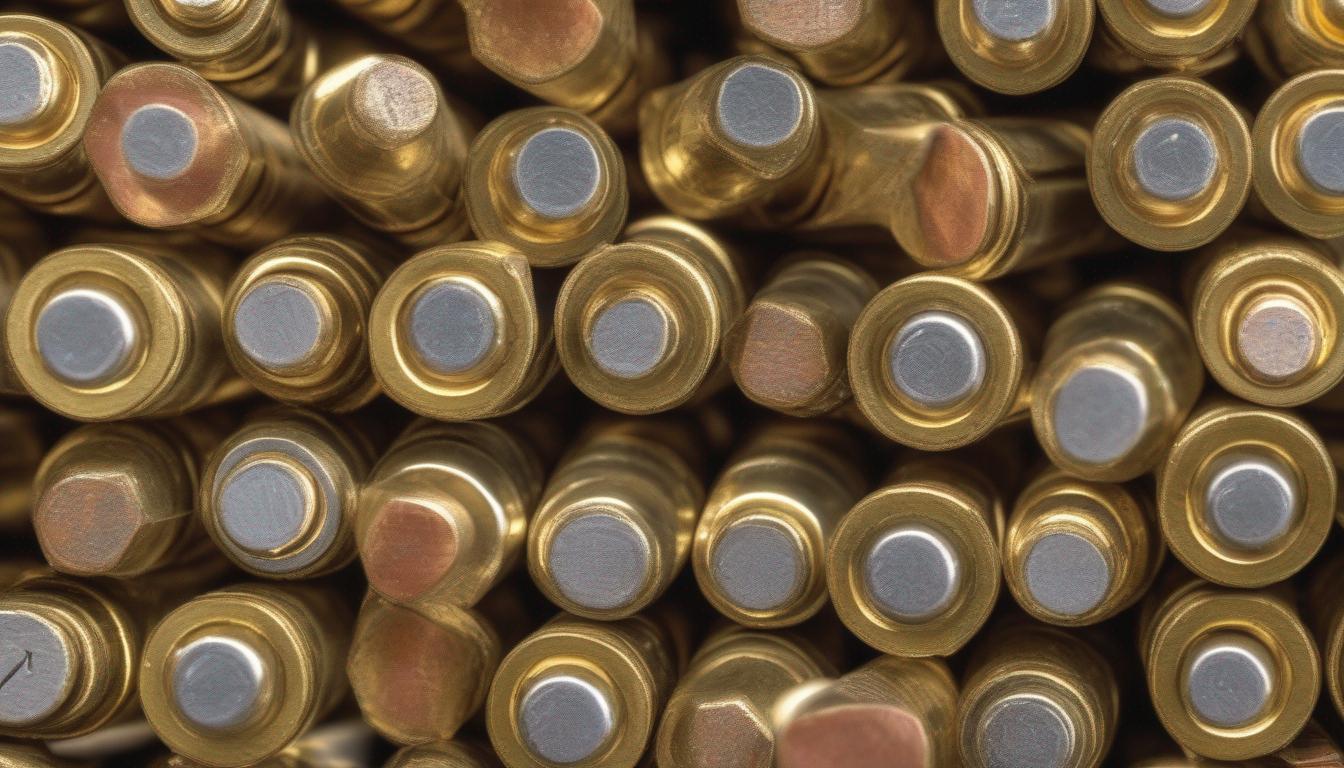The Importance of Self-Defense Mechanisms in Rat Survival
Rats are often seen as pests by humans, but in the animal kingdom, they are intelligent creatures with impressive survival skills. One crucial aspect of their survival is their self-defense mechanisms. Rats have developed various ways to protect themselves from predators and other threats in their environment.
The Instinctual Nature of Rat Self-Defense
Self-defense is a vital aspect of a rat’s survival instinct. When faced with danger, rats rely on their quick reflexes and agility to evade threats. Their keen sense of hearing and smell helps them detect predators early, giving them a chance to escape. Rats are known for their ability to hide in narrow spaces and burrows, making it challenging for larger predators to reach them.
Physical Defense Mechanisms
Rats have several physical defense mechanisms to protect themselves. One of the most well-known is their sharp incisors, which they use not only for feeding but also for self-defense. When threatened, a rat may bite its attacker as a form of defense. Additionally, rats have strong hind legs that allow them to jump and climb quickly to safety. These physical traits make them formidable opponents when confronted.
Chemical Defense Tactics
In addition to their physical abilities, rats employ chemical defense tactics to ward off predators. Rats are known to emit foul odors or secretions from their scent glands when they feel threatened. These odors can be deterring to predators and serve as a warning signal to stay away. Some species of rats have toxic substances in their fur or skin, making them unappealing or even harmful to predators.
Social Self-Defense Strategies
Rats are highly social animals, often living in colonies or groups. Their social structure contributes to their overall self-defense strategies. When a member of the group detects danger, they emit alarm signals to alert others. This early warning system helps the entire group respond effectively to threats. In some cases, rats may even band together to confront a predator, showing strength in numbers.
Adaptability and Intelligence
One of the key reasons for the success of rats as a species is their adaptability and intelligence. Rats are quick learners and can adjust their behavior to changing environments. This adaptability extends to their self-defense mechanisms, allowing them to evolve and improve their tactics over time. Rats that encounter new threats may quickly learn how to protect themselves, passing on this knowledge to future generations.
The Role of Self-Defense in Rat Survival
Self-defense is not just a reactive measure for rats; it is a fundamental aspect of their survival strategy. By being able to defend themselves from predators and other dangers, rats increase their chances of survival and reproduction. Their diverse range of defense mechanisms, from physical traits to social behaviors, underscores the importance of self-defense in the rat world.
Rat self-defense mechanisms are a fascinating aspect of their biology and behavior. These strategies have evolved over time to help rats navigate the challenges of their environment successfully. By understanding these defense tactics, we can gain insights into the resilience and adaptability of these often misunderstood creatures in the natural world.
Adaptations in Urban Rat Populations for Self-Preservation
Rats, often regarded as pests in urban environments, have developed remarkable adaptations for self-preservation. These clever rodents have evolved various strategies to defend themselves and thrive in the challenging urban landscape. Understanding the unique self-defense mechanisms of rats sheds light on their resilience and survival skills in the face of human intrusion and environmental hazards.
Evolution of Urban Rat Populations
Rats have coexisted with humans for centuries, adapting to urban environments to ensure their survival. With easy access to food sources in cities, rat populations have flourished, necessitating the development of effective self-preservation tactics. Urban areas provide rats with shelter, water, and abundant food waste, creating ideal conditions for their proliferation.
Stealth and Agility: Key Self-Defense Traits
One of the most notable self-defense mechanisms of rats is their ability to move with stealth and agility. Rats are incredibly nimble creatures, capable of squeezing through tiny openings and escaping from predators with ease. Their keen sense of hearing and sharp instincts enable them to detect danger and swiftly evade threats, making them elusive and difficult to catch.
Camouflage and Adaptability
In urban settings, rats have learned to blend in with their surroundings, using camouflage to avoid detection. Their fur color and texture often match the urban environment, providing them with a level of protection against predators. Additionally, rats display remarkable adaptability, adjusting their behaviors and habits to navigate the challenges of city life effectively.
Social Intelligence and Communication
Rats exhibit complex social structures and communication systems that play a crucial role in their self-defense strategies. Through scent marking, vocalizations, and body language, rats convey messages to their peers about potential dangers, food sources, and territorial boundaries. This social intelligence allows rats to collaborate and protect each other from threats in their environment.
Reproduction and Population Growth
Another key aspect of rat self-defense is their reproductive capacity and rapid population growth. Rats have high birth rates and short gestation periods, enabling them to replenish their numbers quickly. This reproductive resilience ensures the survival of rat populations even in the face of environmental challenges and predation.
Disease Resistance and Immunity
Rats have developed a level of resistance to various diseases and pathogens, allowing them to thrive in unhygienic urban conditions. Their immune systems have evolved to combat common urban health hazards, giving them a competitive advantage in the struggle for survival. This immunity to diseases further contributes to the resilience of rat populations in urban environments.
The adaptations of urban rat populations for self-preservation underscore their remarkable ability to survive and thrive in challenging conditions. By leveraging stealth, agility, adaptability, social intelligence, reproductive prowess, and disease resistance, rats have carved out a niche for themselves in the urban ecosystem. Studying these self-defense mechanisms not only offers insights into rat behavior but also highlights the remarkable resilience of wildlife in the face of human-dominated landscapes.
Key Takeaway:
Rats may seem like pesky creatures to many, but their survival instincts truly make them some of the most resilient creatures in urban environments. The importance of self-defense mechanisms in rat survival cannot be understated. These rodents have evolved over time to develop a range of adaptations that ensure their self-preservation even in the face of various threats.
Adaptations in urban rat populations play a crucial role in their ability to thrive in man-made environments. Rats have honed their self-defense mechanisms to navigate the challenges posed by living in close proximity to humans. From evasive behaviors to physical adaptations, rats have developed a sophisticated set of strategies to protect themselves and ensure their survival.
One key takeaway from exploring the self-defense mechanisms of rats is the incredible resilience and adaptability of these creatures. Despite facing numerous threats in urban settings, rats have managed to not only survive but also proliferate. Understanding the mechanisms that rats employ for self-preservation can provide valuable insights into coexisting with these animals in urban areas.
Rats exhibit remarkable intelligence when it comes to self-defense. Their ability to assess threats, quickly adapt to changing environments, and utilize their physical attributes for protection showcases their evolutionary prowess. By studying these behaviors, we can gain a deeper appreciation for the complex interplay between urban wildlife and human populations.
The study of rat self-defense mechanisms sheds light on the fascinating ways in which these creatures have adapted to survive in urban environments. By recognizing and respecting the strategies that rats employ for self-preservation, we can foster a more harmonious relationship with these resilient animals. Ultimately, coexisting with rats requires understanding and appreciating the remarkable skills they have developed for their own protection and survival.
Conclusion
Rats have proven themselves to be highly adaptable creatures, especially when it comes to self-defense mechanisms. Their ability to survive and thrive in various environments, including urban settings, highlights the importance of these mechanisms in their overall survival. As urban rat populations continue to grow and interact with human habitats, their adaptations for self-preservation become increasingly crucial.
The Importance of Self-Defense Mechanisms in Rat Survival
Self-defense mechanisms play a vital role in the survival of rats in the wild. These mechanisms are crucial for protecting rats from predators and other threats in their environment. Rats possess a range of defense strategies, including agility, speed, and sharp senses, which enable them to evade danger effectively. Their ability to communicate through vocalizations and pheromones also helps them alert others in the group about potential dangers.
In addition to physical attributes, rats have developed clever behavioral tactics to outsmart predators. For example, they are known to exhibit neophobia, a fear of new objects or changes in their environment, which helps them avoid potential risks. Rats are also adept at learning from past experiences, quickly adapting their behaviors to avoid dangerous situations. These intricate defense mechanisms have been honed through years of evolution, allowing rats to survive in diverse and challenging environments.
Adaptations in Urban Rat Populations for Self-Preservation
The rise of urbanization has presented new challenges for rat populations, forcing them to adapt their self-defense mechanisms to thrive in human-dominated environments. Urban rats face increased exposure to human activities, pollution, and limited food sources, making self-preservation essential for their survival. To cope with these challenges, rats have exhibited remarkable adaptability, showcasing behaviors that enable them to coexist with humans effectively.
One of the key adaptations observed in urban rat populations is their ability to exploit human resources for survival. Rats have become adept scavengers, utilizing food waste and discarded items in urban areas to meet their nutritional needs. Their keen sense of smell and memory allow them to locate food sources efficiently, reducing the need to venture into risky environments. By leveraging human activities to their advantage, urban rats have found a way to thrive in man-made landscapes.
Furthermore, urban rats have demonstrated increased intelligence and problem-solving skills in navigating complex urban environments. Their ability to navigate mazes, overcome obstacles, and access hard-to-reach areas showcases their cognitive abilities in adapting to urban challenges. By continuously honing their skills and behaviors, urban rats ensure their survival in environments where natural habitats are scarce.
The study of self-defense mechanisms in rat survival offers valuable insights into the intricate adaptations and behaviors that enable these resilient creatures to thrive in diverse environments. Whether in the wild or in urban settings, rats continue to demonstrate their remarkable ability to adapt and survive through a combination of physical, behavioral, and cognitive defense strategies. Understanding and appreciating these mechanisms not only sheds light on rat survival strategies but also provides a glimpse into the extraordinary world of animal adaptation and resilience.


